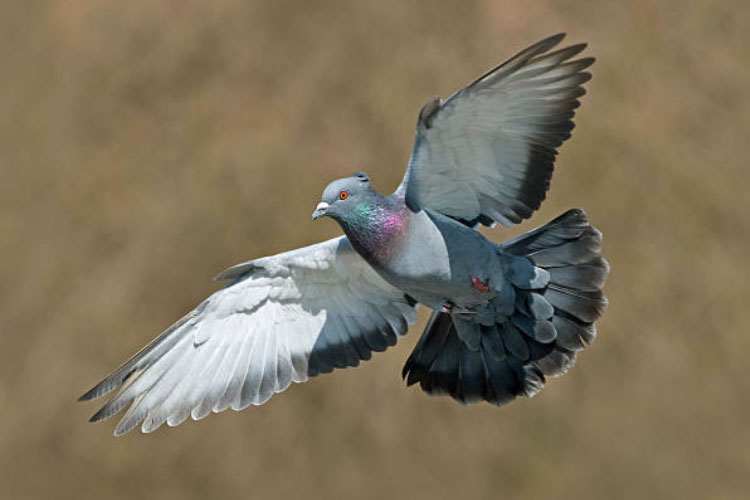Get a Pigeon: Bonding, Training & Building Trust
Are you interested in getting a pigeon as a pet? Well, you’ve come to the right place! In this article, I’ll share some valuable tips and insights on how to get a pigeon of your own. Pigeons are fascinating creatures known for their intelligence, loyalty, and gentle nature. Whether you’re a bird enthusiast or simply looking for a unique and low-maintenance pet, getting a pigeon can be a rewarding experience. So, let’s dive in and discover the steps to bring a pigeon into your life!
Researching Pigeon Breeds
When it comes to getting a pigeon as a pet, researching different pigeon breeds is an important first step. Understanding the characteristics and needs of different breeds will help you choose the right pigeon for you. Here are some things to consider when researching pigeon breeds:
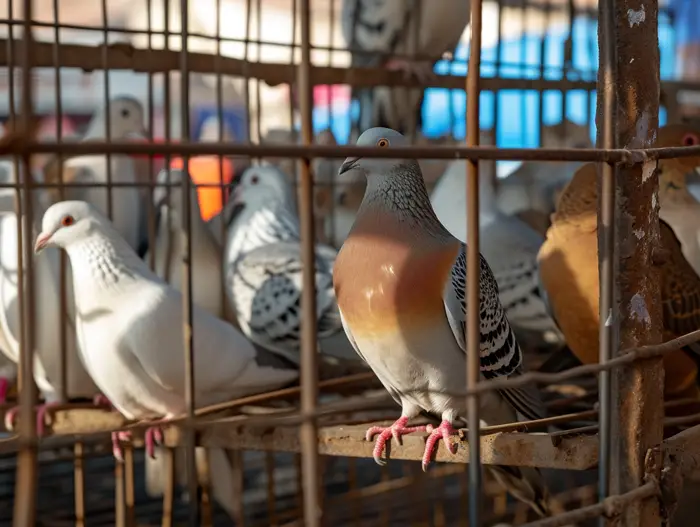
1. Size and Appearance
Pigeons come in various shapes and sizes, with different plumage colors and patterns. Some breeds, like the Homing Pigeon, are larger and have a sleek and athletic appearance. On the other hand, smaller breeds like the Fantail Pigeon have a distinct fan-shaped tail. Take some time to explore the diverse range of pigeon breeds and choose a breed that appeals to you aesthetically.
2. Temperament
Each pigeon breed has its own unique temperament. Some breeds are known to be calm and gentle, making them suitable for families with children. Others may have a more independent nature, preferring a quieter household. Consider your lifestyle, living situation, and the kind of interaction you desire with your pet pigeon when selecting a breed.
3. Specialized Breeds
In addition to the common breeds, there are specialized pigeon breeds that are bred for specific purposes. For example, Racing Pigeons are known for their speed and endurance, while Show Pigeons are bred for their stunning physical features and conformity to breed standards. If you have a specific interest or hobby, such as pigeon racing or bird exhibitions, these specialized breeds might be worth exploring.
4. Health and Longevity
When researching pigeon breeds, it’s important to consider the general health and lifespan of each breed. Some breeds may be more prone to certain health issues, so make sure to gather information on any potential genetic conditions or specific care requirements. Pigeons have an average lifespan of 5 to 10 years, but certain breeds may have longer or shorter lifespans.
Remember, choosing the right pigeon breed requires careful consideration of your preferences and lifestyle. Take the time to research and learn about the different pigeon breeds available. This will ensure that both you and your pet pigeon are happy and well-suited for each other. So let’s dive into the next section to learn more about where to find pigeons for adoption or purchase.
Finding a Reputable Breeder or Rescue Organization

When it comes to getting a pigeon as a pet, finding a reputable breeder or rescue organization is crucial. Here are some steps you can follow to ensure you find a reliable source for your new feathered friend:
1. Do your research: Start by researching breeders or rescue organizations in your area. Look for reviews and feedback from other pigeon owners to get an idea of their reputation. Check if they are associated with any pigeon clubs or organizations, as this can be a sign of their dedication and knowledge.
2. Visit the premises: If possible, visit the breeder or rescue organization in person. This will give you a chance to assess the conditions in which the pigeons are kept. Look for clean and well-maintained enclosures, as well as signs of good hygiene and care.
3. Ask about their breeding practices: When speaking with a breeder, ask about their breeding practices. Responsible breeders will prioritize the health and well-being of their pigeons. Inquire about any genetic testing or health screenings they perform to ensure the quality of their birds.
4. Consider adoption: If you’re open to adopting a pigeon, look for reputable rescue organizations. These organizations often have pigeons in need of loving homes. Adoption not only provides a second chance for a pigeon in need but also helps reduce the demand for breeders.
5. Talk to the breeder or rescue organization: Engage in conversation with the breeder or representative from the rescue organization. Ask questions about the pigeon’s background, temperament, and any specific needs they may have. A knowledgeable and caring individual will be able to provide you with all the necessary information.
Remember, getting a pigeon is a long-term commitment, so it’s important to find a trustworthy source. By doing your research, visiting the premises, asking about breeding practices, considering adoption, and engaging in conversation, you’ll be well on your way to finding a reputable breeder or rescue organization to bring a pigeon into your life.
Preparing a Suitable Habitat for Your Pigeon
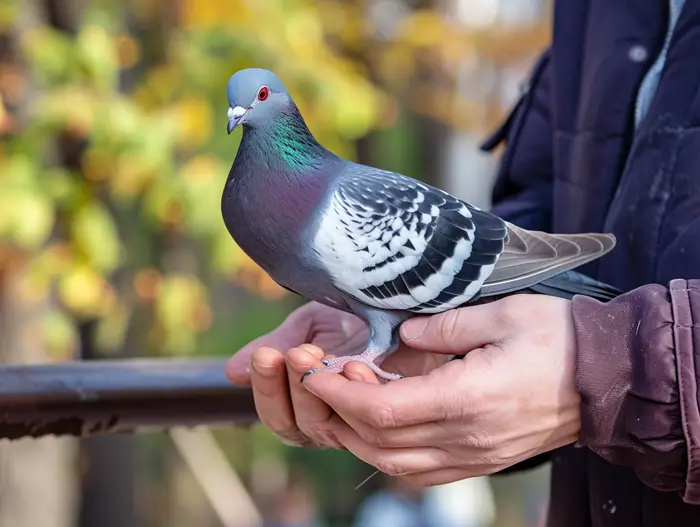
When it comes to getting a pigeon as a pet, it’s important to ensure that you have a suitable habitat ready for them. Creating the perfect environment for your pigeon will not only keep them happy and healthy, but it will also enhance your experience as a pigeon owner. Here are some essential steps to follow when preparing a suitable habitat for your pigeon:
- Selecting the right space: Before bringing your pigeon home, it’s crucial to choose an appropriate space for their habitat. Ideally, you should provide a dedicated indoor or outdoor area that offers enough room for your pigeon to fly and stretch their wings. Remember, pigeons need space to move around comfortably.
- Setting up a pigeon loft: A pigeon loft serves as their home and provides a safe and secure space for your pigeon to roost and sleep. Make sure the loft is well-ventilated, secure from predators, and easily accessible for cleaning. Additionally, provide nesting boxes or shelves where your pigeon can lay eggs, as they enjoy nesting in enclosed areas.
- Providing proper flooring and bedding: Pigeons spend a significant amount of time on their feet, so it’s essential to choose the right flooring for their habitat. Concrete or wooden floors are popular choices as they can be easily cleaned and provide a stable surface. For added comfort, you can also include bedding materials such as straw or wood shavings.
- Providing feeding and watering stations: Pigeons require a well-balanced diet to thrive. Set up feeding stations with appropriate food and water containers for your pigeon. They should have access to fresh food and water at all times. It’s crucial to clean and refill the containers regularly to maintain hygiene.
- Adding perches and toys: Pigeons enjoy perching, so including perches of varying heights and textures will provide mental and physical stimulation. Additionally, adding toys and items for enrichment, such as swings or hanging treats, can keep your pigeon engaged and entertained.
By following these steps, you can create a suitable and comfortable habitat for your pigeon. Remember to consider their natural behaviors and needs when designing their living space. A well-prepared habitat will ensure that your pigeon is happy, healthy, and thriving in their new home.
Creating a Safe and Comfortable Environment
When it comes to getting a pet pigeon, creating a safe and comfortable environment for them is of utmost importance. Pigeons, like any other pet, need a space where they can feel secure, comfortable, and able to exhibit their natural behaviors. In this section, I’ll outline the key steps you need to follow to ensure your pigeon’s habitat meets their needs.
1. Selecting the Right Space
The first step in creating a safe and comfortable environment for your pet pigeon is selecting the right space for their living quarters. It’s important to provide them with an area that is well-ventilated, away from direct sunlight and extreme temperatures. Choose a quiet location that will minimize stress and disturbances for your pigeon.
2. Setting Up a Pigeon Loft
A pigeon loft is a specialized housing structure designed to meet the specific needs of pigeons. It’s essential to have a well-built loft that provides proper ventilation and protection from predators. Make sure the loft is spacious enough to allow your pigeon to move around comfortably and has separate areas for roosting and nesting.
3. Providing Proper Flooring and Bedding
The flooring and bedding in your pigeon’s living space play a crucial role in their comfort and hygiene. Opt for a non-slippery material, like concrete or hardwood, that is easy to clean and disinfect. Use suitable bedding, such as straw or wood shavings, to provide insulation and absorb any waste.
4. Setting Up Feeding and Watering Stations
To ensure your pet pigeon has a healthy and well-balanced diet, it’s important to set up dedicated feeding and watering stations. Use sturdy feeders and waterers that are easy to clean and replenish. Provide a variety of pigeon feed, including grains and seeds, to meet their nutritional needs. Additionally, make sure fresh water is available at all times.
5. Adding Perches and Toys
Pigeons are social birds that love to perch and explore their surroundings. Include perches of different heights and textures in their living space to stimulate their natural behaviors. Engage your pigeon with appropriate interactive toys or objects, such as swings or mirrors, to keep them mentally stimulated and prevent boredom.
Establishing a Feeding and Care Routine
When it comes to getting a pet pigeon, establishing a consistent feeding and care routine is essential for their overall health and well-being. In this section, I’ll guide you through the steps to ensure that your feathered friend is well-nourished and properly taken care of.
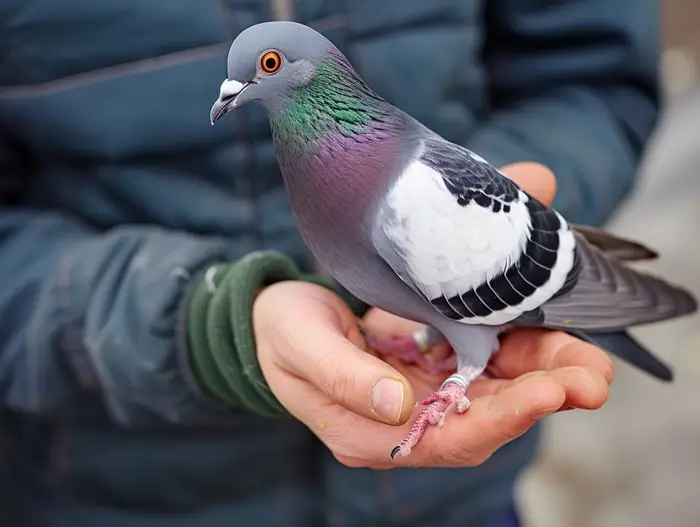
Feeding
Pigeons have specific dietary needs, so it’s important to provide them with a balanced and nutritious diet. Here’s what you need to know about their feeding routine:
- Provide a Balanced Diet: Pigeons thrive on a diet that includes a mix of grains, seeds, and greens. You can find pre-mixed pigeon feeds at your local pet store or create your own blend using ingredients like corn, peas, millet, and wheat.
- Offer Clean and Fresh Water: Pigeons need access to clean and fresh water at all times. Make sure to provide a shallow dish that is easy for them to drink from. Keep the water clean by changing it daily, especially during hot weather when water can become contaminated more quickly.
- Add Grit for Digestion: Pigeons have a unique digestive system that requires grit for effective digestion. You can provide commercially available pigeon grit or offer crushed oyster shells or crushed eggshells as a source of calcium.
Care
In addition to their feeding routine, pigeons require certain care practices to ensure their health and well-being. Here are some essential care tips:
- Maintain a Clean Living Space: Regularly clean the pigeon loft or cage to prevent the build-up of droppings and maintain a hygienic environment. This will help prevent the spread of diseases and ensure your pigeon’s comfort.
- Daily Exercise: Pigeons are active birds and need regular exercise to stay healthy. Encourage physical activity by providing perches of varying heights and adding toys or objects for them to explore.
- Regular Health Checks: Schedule regular visits to an avian veterinarian who can monitor your pigeon’s health and provide necessary vaccinations and treatments. This will help catch any potential health issues early on.
Remember, establishing a feeding and care routine is crucial for the well-being of your pet pigeon. By providing them with a balanced diet, clean living space, and regular veterinary care, you’ll ensure that they lead a happy and healthy life. So, let’s get started on creating the perfect routine for your feathered friend!
Bonding and Training with Your Pigeon

When bringing a pigeon into your home, it’s important to establish a strong bond and provide proper training to ensure a happy and well-behaved pet. Here are some tips for bonding and training with your pigeon:
- Start with trust: Building trust is the foundation for a strong bond with your pigeon. Spend time near the bird without making sudden movements or loud noises. Offer treats from your hand to create a positive association.
- Hand-feeding: Hand-feeding is an excellent way to build trust and reinforce the bond between you and your pigeon. Use small pieces of their favorite food and gently offer it to them from your hand. This will help them associate your presence with positive experiences.
- Handling your pigeon: Gradually introduce gentle handling to get your pigeon comfortable with being touched. Start by gently stroking their feathers while they’re perched, and gradually move on to gently holding them in your hands. Always be calm, patient, and gentle during this process.
- Socialization: Pigeons are social animals and can benefit from interacting with other pigeons. If possible, provide opportunities for your pigeon to meet and interact with other pigeons in a controlled environment. This can help them develop social skills and prevent loneliness.
- Basic commands: Pigeons are intelligent creatures and can be trained to respond to basic commands. Start with simple commands, such as “step up” or “come here,” and reward them with treats when they respond correctly. Be consistent with your commands and use positive reinforcement.
- Flight training: Pigeons are natural flyers, and providing them with regular flight training is essential for their physical and mental well-being. Create a safe and secure outdoor space for them to fly freely and encourage them to return to you by offering treats.
Remember, building a bond with your pigeon takes time and patience. Be consistent, use positive reinforcement, and tailor your training methods to suit your pigeon’s individual personality. With time and effort, you’ll develop a strong connection with your pigeon and enjoy the rewards of a trusting and well-trained companion.
Conclusion
Building a bond with a pet pigeon is a rewarding experience that requires time, patience, and consistent training methods. In this article, I have discussed the importance of bonding and training with a pigeon, providing valuable tips for building trust, hand-feeding, handling, socializing, teaching basic commands, and flight training.
By following these techniques, you can establish a strong connection with your pigeon and create a harmonious relationship. Remember, it’s crucial to approach the training process with patience and positivity. Pigeons are intelligent creatures that respond well to gentle guidance and positive reinforcement.
As you embark on this journey with your pet pigeon, keep in mind that building a bond takes time. Be consistent in your training methods and provide plenty of opportunities for socialization and flight training. With dedication and love, you’ll develop a deep connection with your pigeon that will bring joy and companionship for years to come.
So, go ahead and start building that special bond with your pigeon. Enjoy the journey and the unique bond that you will create together.
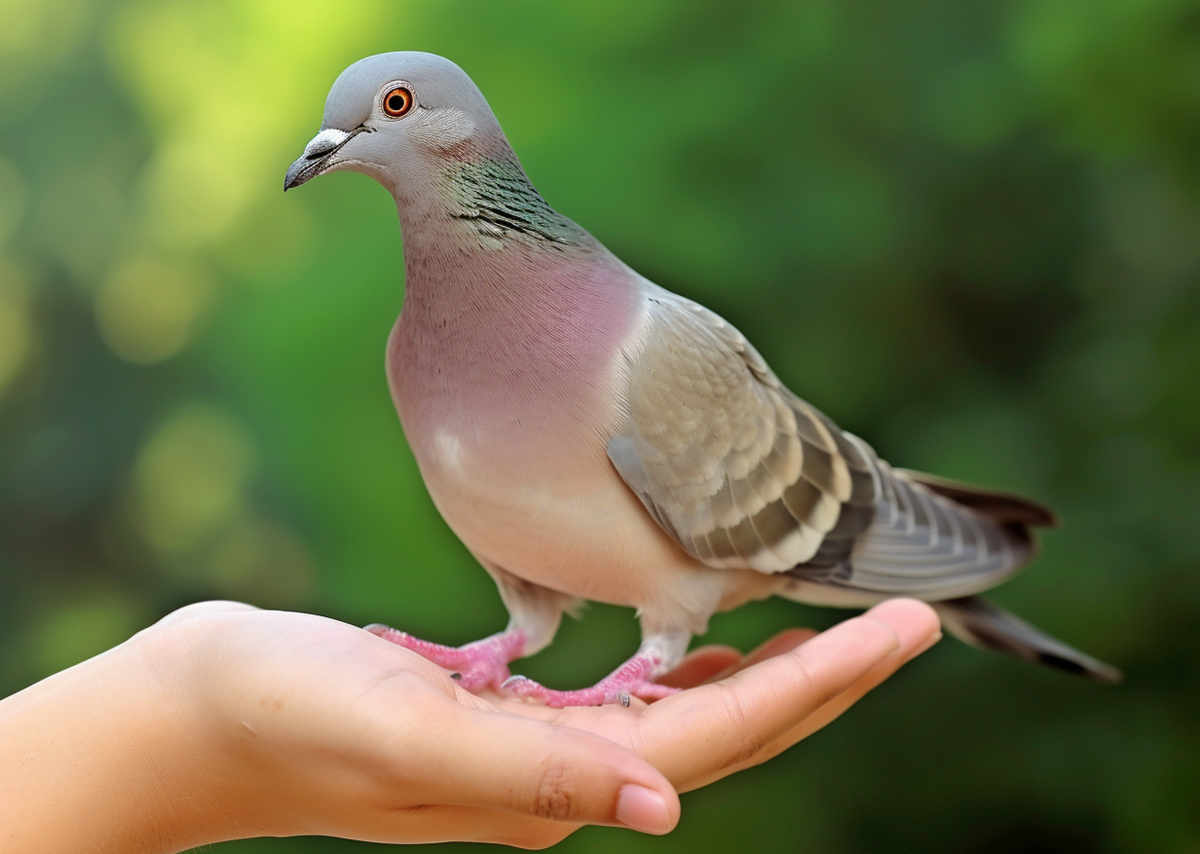
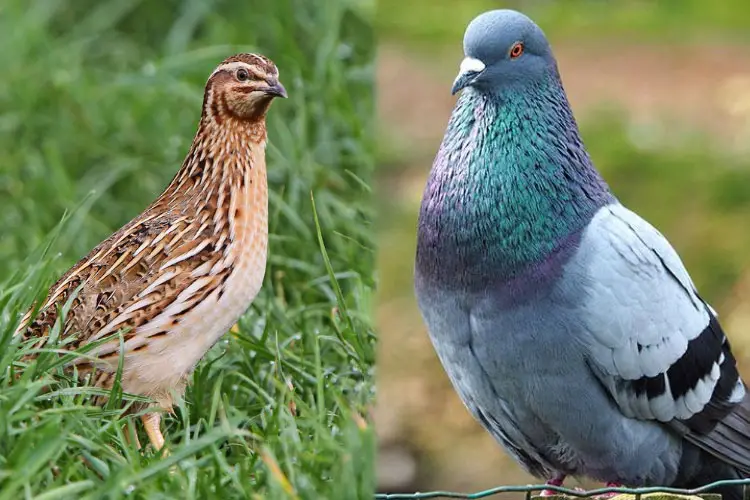

![Do Pigeons Eat Mice? [Everything You Need To Know]](https://avicultureblog.com/wp-content/uploads/2023/01/Do-Pigeons-Eat-Mice.jpg)


